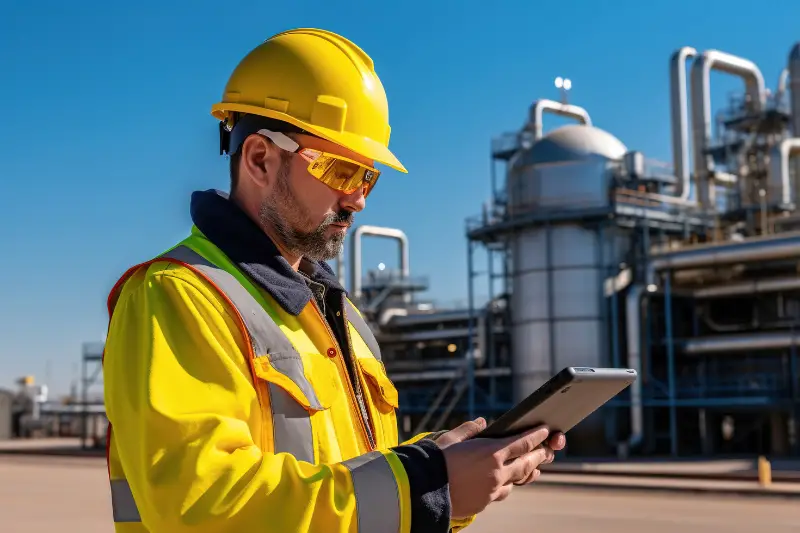Click here to get this post in PDF
No matter where you work or what industry you’re employed in, health and safety hazards must be avoided at all costs. So, what sort of health and safety must-haves should you have in place to avoid workplace accidents?
Whether you work behind a desk in a centrally located office, or you spend your time on a construction site, there are a countless health and safety risks. As a worker, you need to be aware of these in any workplace environment.
Of course, some health and safety hazards may have more serious consequences than others. Failing to use heavy machinery properly will result in a more dramatic accident than sitting on an office incorrectly, after all!
That being said, every health and safety hazard needs to be treated seriously, as accidents at work can be very damaging – both for the individual(s) affected and the business in general. So, to help avoid workplace accidents from becoming an issue, read on to learn more about 10 health and safety must-haves…
10 Health and Safety Must-Haves for Your Business
1. A Health and Safety Policy
This is non-negotiable. The law states that every business needs to have a policy for managing health and safety, which means that your first port of call should be to make sure that yours has been drafted and is completely up to date.
A health and safety policy sets out your businesses’ general approach to health and safety. It should explain how you as an employer will manage it, and who will be responsible for taking specific actions.
Always remember that, if you make any changes to the policy, you need to share this with your employees! Sharing is caring, after all.
2. A Health and Safety Checklist
If you aren’t sure exactly what you need to include in your policy, or you’re unsure as to what health and safety issues exist within your workplace, you shouldn’t hesitate to put together a health and safety checklist.
In a health and safety checklist, you can note down every possible hazard, who should be responsible for keeping on top of said hazard and whether it has been recently checked. You can then keep this checklist for reference, updating and reviewing it when necessary.
3. A Designated Health and Safety Officer
If you have a large number of employees within your organisation, staying on top of everybody’s safety can prove to be a challenge. That’s why you should always appoint one of your employees, or a group, as a health and safety officer.
They will have full responsibility over managing health and safety in the workplace, which means that more attention will be paid to any issues that need to be resolved. That way, the chances of a work accident occurring will be dramatically decreased – result!
4. Appropriate Facilities
Having the right facilities available for your employees is essential for avoiding workplace accidents. Just as an example, there’s no use working somewhere that deals with potentially harmful substances if there are no cleaning stations on offer.
It’s sensible to assess how many employees you have, what sort of facilities are needed and how you can incorporate them into your workplace. This sort of assessment may lead to you making the conclusion that you need to change your workplace altogether.
5. Equipment Checks
All types of equipment, no matter how durable it is supposed to be, has a shelf life. Over time, equipment will become worn and, as a result, may pose a health and safety risk if it is not fixed or replaced.
So, it’s imperative that your business has an equipment checking process where all equipment, including your local exhaust ventilation system or LEV is given a thorough once over. Even if something is brand new out of the packaging, there is no absolute guarantee that is it going to be safe to use.
6. A Dress Code
No, we’re not talking about ‘smart-casual’ or ‘suits and ties’ here. In this instance, having an appropriate dress code means to carefully monitor what your employees are wearing if they need to reduce the risk of causing an accident based on their clothes.
If you work in a warehouse, you’ll probably need your employees to wear hi-vis clothing, for example. Or, if you work around heavy machinery, you will need to ensure employees don’t’ wear long, flowy clothes that could get trapped.
7. Regular Training Sessions
How do you expect your employees to follow best practices with regards to health and safety if they aren’t regularly trained? One of the most effective ways of reducing health and safety is to have regular training sessions for your employees, covering all of the potential hazards they might encounter.
You can offer one-to-one sessions for employees who handle specific equipment during their day-to-day role. Or, you could offer more general sessions to cover issues that are likely to affect everyone in the business.
8. A Clear and Simple Reporting Process
Every workplace accident, no matter how minor or insignificant, needs to be properly reported so the chances of it happening again in the future can be greatly reduced.
However, if the reporting process is confusing, or inconvenient, there’s a chance that accidents will go unreported. So, save yourself and your employees the trouble by having a clear and simple process for this.
9. Pre-Placement Physicals
If you’re employing someone in a position that requires a certain level of physical strength or fitness, then you’ll need to make sure that they are up to the task. This isn’t just so that you know they’ll do a good job – it’s also for their own safety and everybody else’s.
It’s a good idea to have a pre-placement physical in place that is part of the recruitment process, allowing you make a fair assessment of someone’s capabilities.
10. Emergency Drills
Granted, nobody likes having to go through an emergency drill, but their importance should not be underestimated. It’s difficult to prepare for situations, such as a building fire, but you can reduce the potential for accidents occurring by having scheduled drills.
Emergency drills can help you to identify potential issues in your response, which should hopefully be avoided in the future.
Are There Any More Health and Safety Must-Haves You Can Think Of?
The importance of good health and safety practices in your workplace should never be underestimated, as they could be the key to preventing potentially serious accidents.
Are there any more health and safety must-have out there that you think businesses should always use? Feel free to leave you suggestions in the comments below!
You may also like: Practical Ways to Improve Safety in Your Warehouse
Image source: stock.adobe.com

